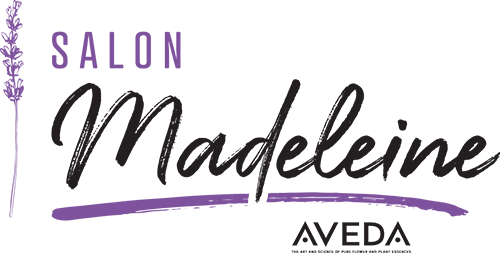Botanical Repair vs Olaplex
Posted 2 years ago on - Aveda, Haircare, Posts
Aveda’s Botanical Repair vs. Olaplex: A Comparison of Hair Repair Products
Hair care has evolved significantly over the years, and two prominent brands, Aveda and Olaplex, have been at the forefront of developing innovative hair repair products. Both Aveda’s Botanical Repair line and Olaplex have garnered widespread attention for their ability to rejuvenate damaged hair and promote overall hair health. In this comparison, we will delve into the key differences and similarities between these two products, and ultimately determine which one stands out as the better option.
Aveda’s Botanical Repair Line:
Aveda’s Botanical Repair line is celebrated for its natural approach to hair repair. Utilizing botanical ingredients, the brand emphasizes eco-friendly and sustainable practices in their products. The Botanical Repair line aims to reconstruct and strengthen hair from the inside out, catering to various hair types and textures.
Key Features:
- Botanical Ingredients: Aveda’s Botanical Repair line relies on the power of plant-derived ingredients like quinoa protein, avocado oil, and green tea extract. These botanicals work together to nourish and repair damaged hair, making it an appealing choice for those seeking natural solutions.
- Customizable Solutions: Aveda offers a variety of products within the Botanical Repair line, allowing users to tailor their hair care routine to specific concerns, such as intense repair, strengthening, or daily maintenance.
- Eco-Friendly Approach: Aveda’s commitment to sustainability and environmental consciousness sets it apart from many other brands. Their products are cruelty-free and manufactured using renewable energy sources.
Olaplex:
Olaplex, on the other hand, revolutionized the hair care industry with its patented bond-building technology. Instead of focusing solely on nourishing ingredients, Olaplex concentrates on restoring and rebuilding disulfide bonds in the hair, which are often damaged during chemical treatments and heat styling.
Key Features:
- Bond-Building Technology: Olaplex’s signature technology, bis-aminopropyl diglycol dimaleate, is designed to reconnect and strengthen broken disulfide bonds in the hair, resulting in noticeably healthier and more resilient strands.
- Hair Color and Chemical Treatment Support: Olaplex is widely popular in professional salons as it allows for better hair color retention and minimizes damage during chemical processes like bleaching and coloring.
- Proven Results: Many users have reported significant improvements in their hair’s texture, strength, and overall appearance after incorporating Olaplex into their hair care routine.
Comparison:
1. Targeted Use: Aveda’s Botanical Repair line is well-suited for a wide range of hair types and can be used as a regular hair care routine for gentle repair and maintenance. It caters to individuals seeking more natural ingredients and a holistic approach to hair health. In contrast, Olaplex is often considered a more specialized treatment, especially for those with chemically treated or severely damaged hair. It is highly effective at restoring hair that has undergone frequent color treatments, bleaching, or heat styling.
2. Repair Mechanism: The primary difference lies in their repair mechanisms. Aveda’s Botanical Repair line focuses on nourishing and fortifying hair through plant-derived ingredients, promoting healthy hair growth and softness. Olaplex, on the other hand, targets the internal structure of the hair, rebuilding broken bonds and providing noticeable strength and resilience to damaged strands.
3. Sustainability vs. Technology: Aveda’s commitment to sustainability is a significant advantage for environmentally-conscious consumers. The brand’s use of natural ingredients and eco-friendly practices appeals to those seeking hair repair solutions that align with their ethical values. On the other hand, Olaplex’s emphasis on scientific innovation and advanced technology has made it a go-to choice for many professionals in the beauty industry.
4. Hair Care Routine: Aveda’s Botanical Repair line offers a comprehensive set of products, including shampoos, conditioners, and leave-in treatments, which can be integrated into a daily hair care routine. Users can select the products that best suit their hair needs. Meanwhile, Olaplex is typically used as a treatment product and is not designed for daily use. Its step-by-step system is intended to be applied occasionally, with the frequency depending on the hair’s condition and the level of damage.
5. Price Point: Aveda’s Botanical Repair line is generally more budget-friendly compared to Olaplex, which tends to be pricier due to its patented technology and higher concentration of active ingredients. However, the cost may be justified for those seeking targeted and intensive repair treatments.
Decision:
Both Aveda’s Botanical Repair line and Olaplex have their merits and can cater to different hair care needs. For individuals who prioritize a natural and sustainable approach, Aveda’s Botanical Repair line is a compelling choice. Its botanical ingredients promote hair health and are gentle on the environment.
Ultimately, the decision between Aveda’s Botanical Repair line and Olaplex will depend on an individual’s hair type, concerns, and personal preferences. Those seeking a more holistic and sustainable approach may opt for Aveda, while those with damaged hair from chemical treatments may find Olaplex to be a transformative solution.
Disclaimer: It’s important to note that individual results may vary, and it is always advisable to consult with a hair care professional before introducing new products or treatments into your hair care routine.

